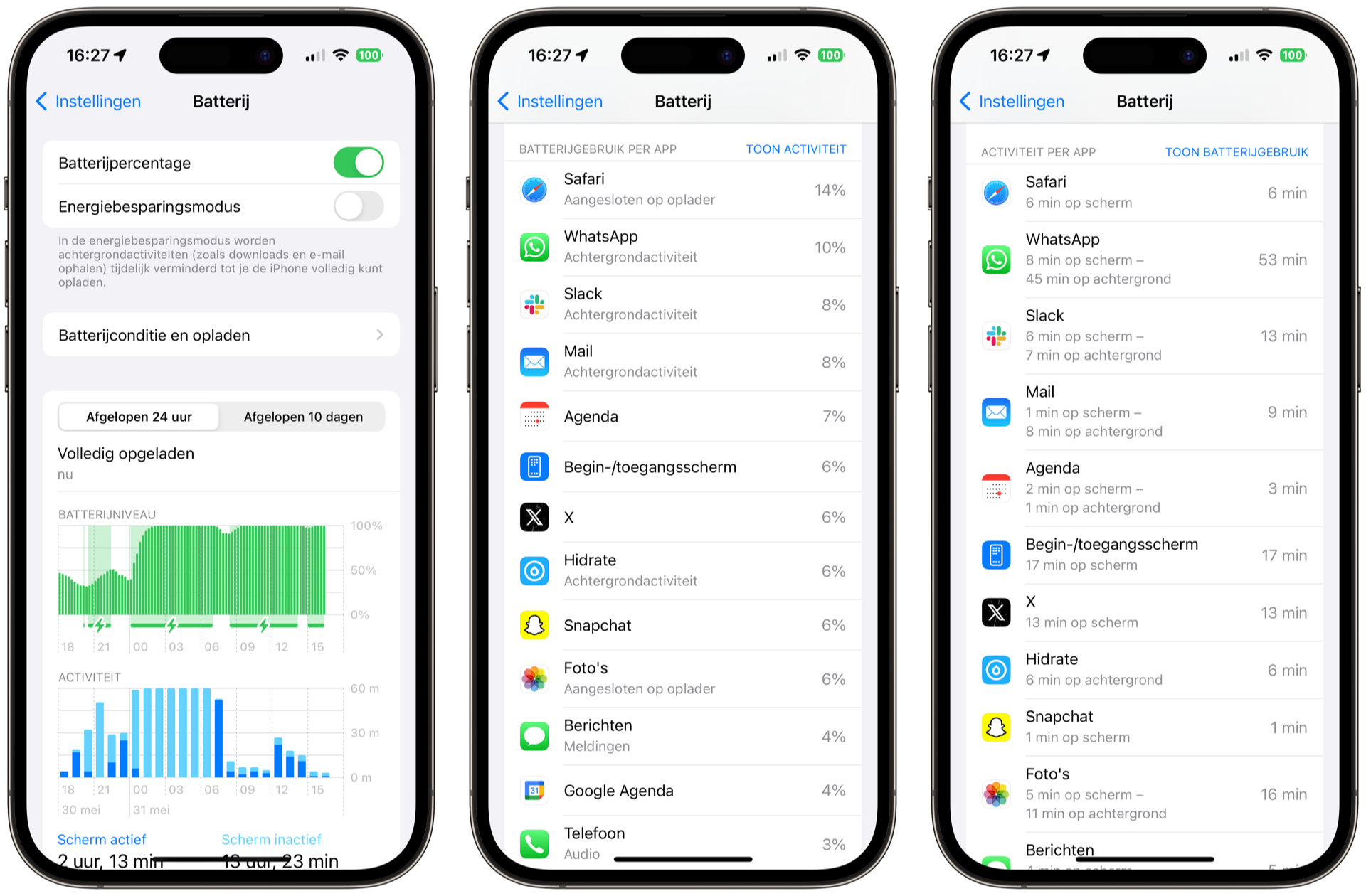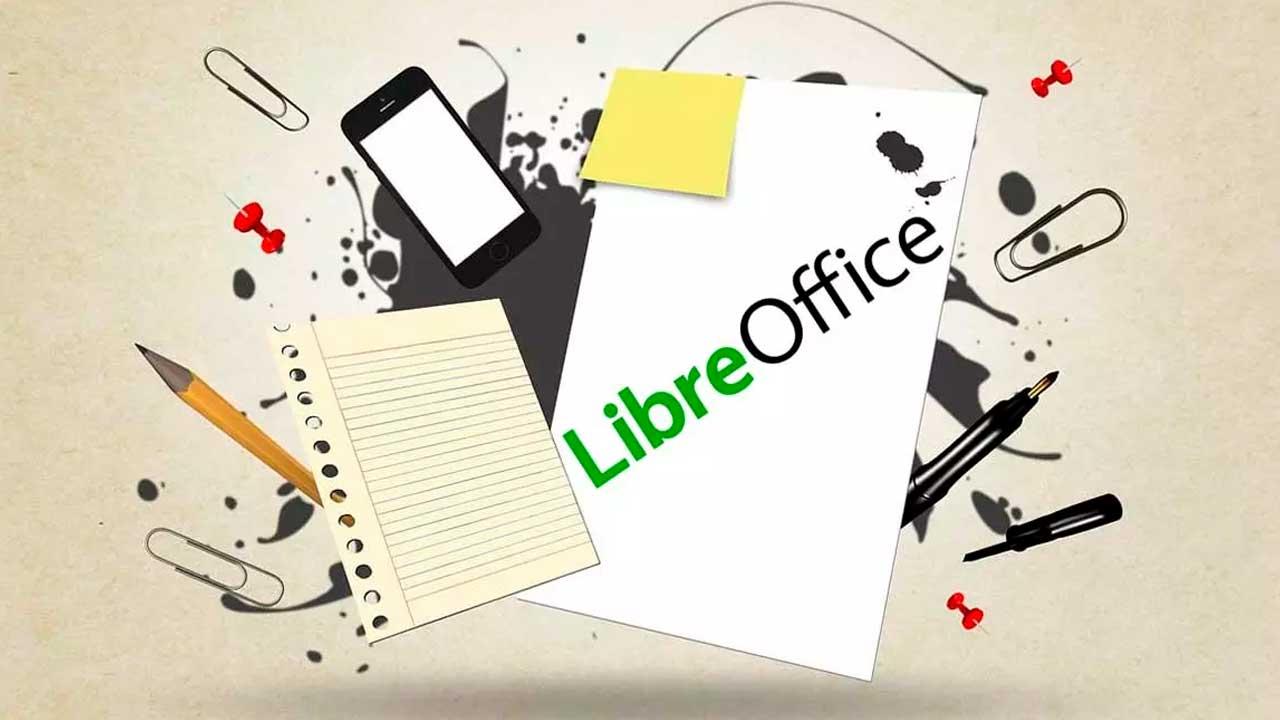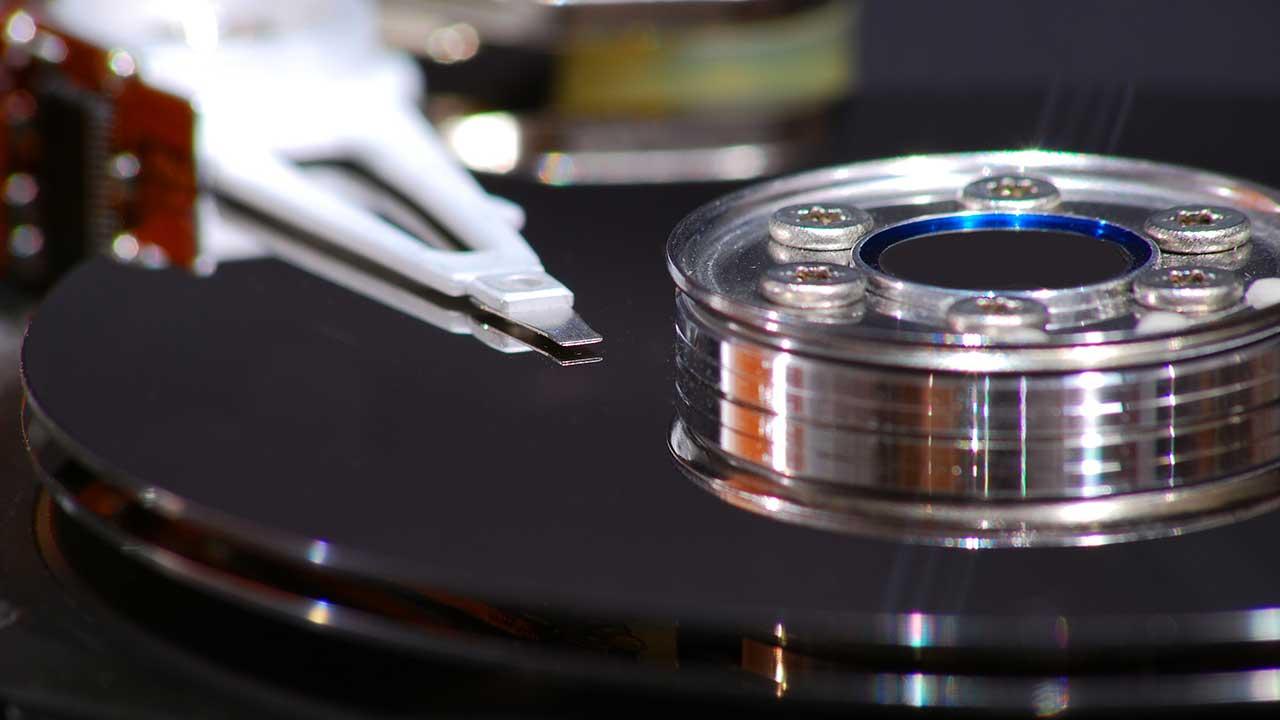Battery consumption per app
On the iPhone and iPad you can see how much energy certain apps use. You can distinguish between the past 24 hours and the past 10 days. You can also see which apps you use the most and how many minutes a particular app has been active, both in active use and in the background.
Do you notice that your iPhone quickly runs out of power after an iOS update? Then check out our article about battery draining faster after iOS update.
View battery usage per app
In iOS you will find an option to see which apps consume a lot of battery life. You can view it like this:
- Go to the Settings app on iPhone or iPad.
- Scroll to Battery. At the bottom of the screen you will see a list of the apps that have used the most energy.
Tap the ‘Show activity’ or ‘Show battery usage’ heading to switch between percentages and minutes.

At first glance, you would say that apps that consume a lot of energy should be closed immediately. But there could be more to it.
How does iOS measure battery consumption per app?
Battery usage shows which apps you’ve used in the last 24 hours and what percentage they’ve used. Apps you used while charging the iPhone or iPad do not count.
An app can consume more battery than normal for several reasons:
- You used the app a lot, for example WhatsApp or Instagram.
- The app requires hardware functions that require a lot of battery power, for example GPS navigation and graphics-heavy games.
- The app remained active in the background, for example to automatically download content or track your location, for example Facebook.
- The app is poorly designed and therefore uses a lot of energy.
If you use an app a lot, it is logical that this app is high on the list. If you are constantly chatting, WhatsApp (or another chat app) will seem like the biggest energy drain.
Apps that use heavy hardware functions such as GPS navigation and graphical games already naturally use a lot more energy. There isn’t much you can do about that either. In order to navigate, the GPS function must be continuously active and the app must continuously track your location and refresh the map data. If you connect the iPhone to a car charger while navigating, you will not see the consumption of, for example, TomTom and Flitsmeister. But if you navigate without a charging cable, these apps suddenly turn out to be the biggest battery drainers.
Apps that remain active in the background do not have to be a problem. For example, you are streaming music or uploading photos. You can disable automatic retrieval of new content or continuous tracking of your location via the Settings app. You need to take action with apps that remain active in the background unintentionally, such as the Facebook app.
Apps that are poorly designed are the real culprits. You will have to find an alternative for this as quickly as possible, although that is not always easy. The Facebook app, for example, is a real battery drainer, but there are few good alternatives. In the list you will automatically see apps that use a lot of data, but that you have hardly used. You should investigate those apps a little further. Close the app and restart your iPhone or iPad to see if the apps continue to cause problems. If an app continues to consume a lot of energy, it is time to look for an alternative. There are fitness apps that constantly count your steps and for which there are good alternatives.
Battery consumption of apps due to poor mobile coverage
There is another reason why the battery can drain quickly: because you are in an area with poor mobile coverage or because the WiFi signal is weak. An app can then consume more battery than normal, while the app maker cannot do anything about it. The iPhone’s wireless features require more effort to maintain a connection. If you are currently using a particular app heavily, it will seem as if the app is the culprit. This cannot be recognized in the list of battery consumption of apps.
Do you want your iPhone’s battery to last longer? Then switch on the Energy Saving Mode.
Also check out our other tips about app use:
- Which apps use a lot of storage space?
- Which apps do you use the most?
- Which apps use a lot of data?














